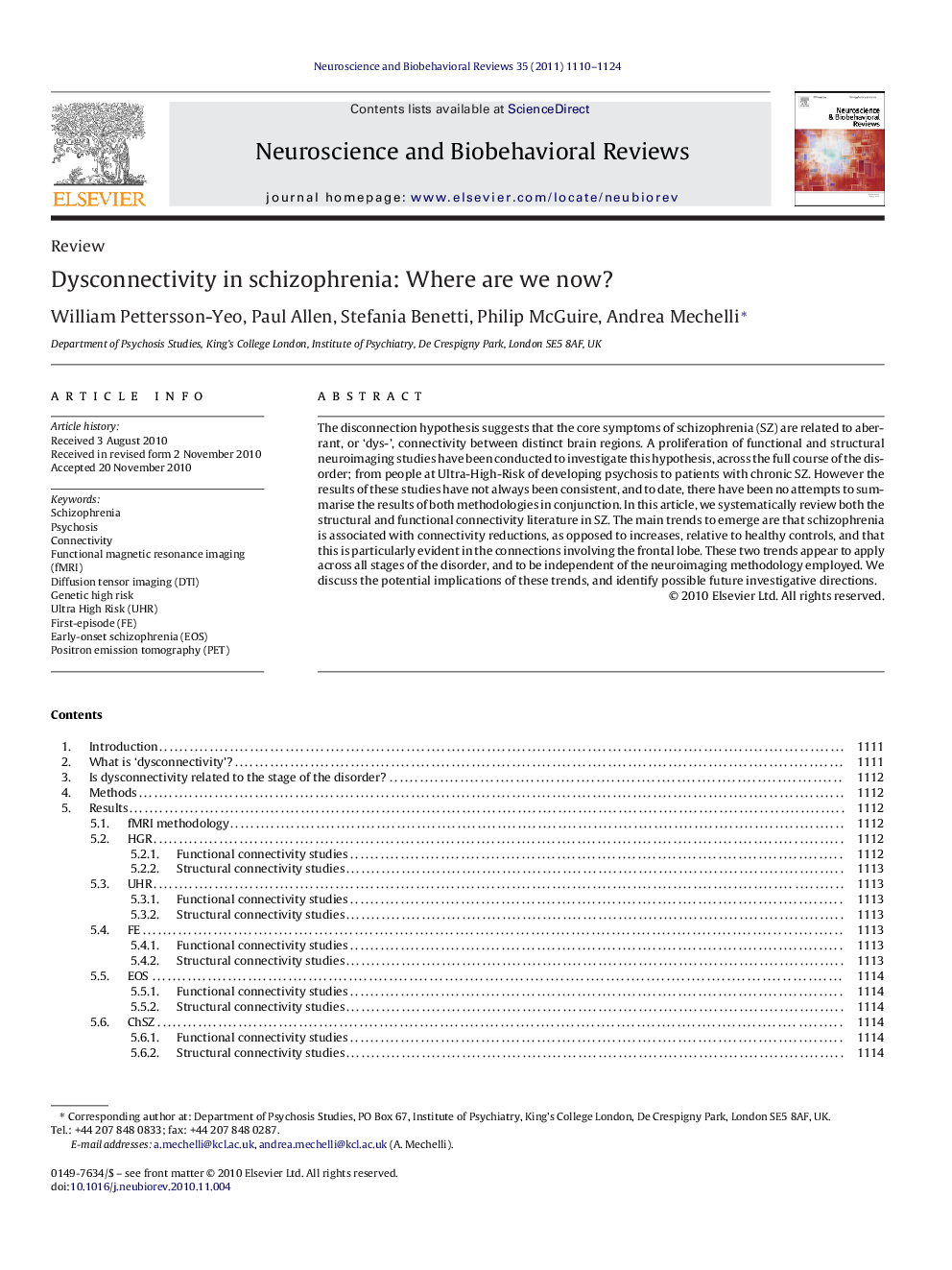| کد مقاله | کد نشریه | سال انتشار | مقاله انگلیسی | نسخه تمام متن |
|---|---|---|---|---|
| 937950 | 924562 | 2011 | 15 صفحه PDF | دانلود رایگان |

The disconnection hypothesis suggests that the core symptoms of schizophrenia (SZ) are related to aberrant, or ‘dys-’, connectivity between distinct brain regions. A proliferation of functional and structural neuroimaging studies have been conducted to investigate this hypothesis, across the full course of the disorder; from people at Ultra-High-Risk of developing psychosis to patients with chronic SZ. However the results of these studies have not always been consistent, and to date, there have been no attempts to summarise the results of both methodologies in conjunction. In this article, we systematically review both the structural and functional connectivity literature in SZ. The main trends to emerge are that schizophrenia is associated with connectivity reductions, as opposed to increases, relative to healthy controls, and that this is particularly evident in the connections involving the frontal lobe. These two trends appear to apply across all stages of the disorder, and to be independent of the neuroimaging methodology employed. We discuss the potential implications of these trends, and identify possible future investigative directions.
Research highlights▶ Structural and functional connectivity changes present at each stage of schizophrenia. ▶ The majority of studies report connectivity reductions in patients versus controls. ▶ Reduced connectivity of the frontal lobe is the most reported alteration.
Journal: Neuroscience & Biobehavioral Reviews - Volume 35, Issue 5, April 2011, Pages 1110–1124